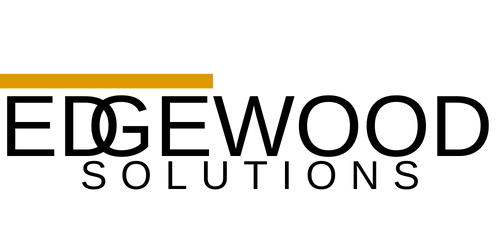Blog Layout
10 Digital Marketing Tactics That Will Skyrocket Your Sales
Hans Oliver • May 9, 2024
Digital marketing has become an essential component of any successful marketing strategy.
In today’s digital age, businesses must stay ahead of the competition and maximize their sales potential. Digital marketing has become an essential component of any successful marketing strategy. By leveraging the Power of the internet, businesses can reach a wider audience, generate leads, and ultimately skyrocket their sales. This article will explore ten effective digital marketing tactics that will help you boost your sales and achieve remarkable results.
Table of Contents
1. Search Engine Optimization (SEO)
- What is SEO, and why is it important?
- How does SEO improve your website’s visibility?
- Tips for optimizing your website for search engines
2. Content Marketing
- The Role of content marketing in driving sales
- Creating engaging and valuable content for your target audience
- Promoting your content to increase brand awareness
3. Social Media Marketing
- Harnessing the Power of social media platforms
- Creating compelling social media campaigns
- Engaging with your audience and building brand loyalty
4. Pay-Per-Click (PPC) Advertising
- Understanding the basics of PPC advertising
- Setting up effective PPC campaigns
- Monitoring and optimizing your PPC ads for better results
5. Email Marketing
- Building an email list of potential customers
- Crafting personalized and engaging email campaigns
- Analyzing email metrics and refining your strategy
6. Influencer Marketing
- Leveraging the Influence of industry leaders
- Identifying relevant influencers for your brand
- Collaborating with influencers to promote your products or services
7. Video Marketing
- The rise of video content in digital marketing
- Creating compelling and shareable videos
- Optimizing videos for search engines and social media platforms
8. Conversion Rate Optimization (CRO)
- Maximizing your website’s conversion potential
- Conducting A/B testing to improve conversion rates
- Implementing effective call-to-actions and landing pages
9. Mobile Marketing
- The importance of mobile optimization
- Creating mobile-friendly websites and apps
- Utilizing mobile advertising and location-based targeting
10. Marketing Automation
- Streamlining and automating marketing processes
- Nurturing leads through personalized automation
- Measuring and optimizing your automated campaigns
1. Search Engine Optimization (SEO)
What is SEO, and why is it important? SEO refers to optimizing your website and its content to rank higher in search engine results pages (SERPs). It is crucial for businesses because it drives organic website traffic, increases visibility, and boosts credibility.
How does SEO improve your website’s visibility? SEO involves various techniques, such as keyword research, on-page optimization, and link building. By implementing these strategies, search engines recognize your website as relevant and trustworthy, leading to higher rankings and increased visibility among potential customers.
Tips for optimizing your website for search engines
- Conduct thorough keyword research using tools like Google Keyword Planner and SEMrush.
- Optimize your meta tags, headings, and content with relevant keywords.
- Improve your website’s loading speed to enhance user experience.
- Build high-quality backlinks from reputable websites in your industry.
- Regularly create and publish high-quality, keyword-rich content.
2. Content Marketing
The Role of content marketing in driving sales Content marketing involves creating and sharing valuable, relevant, and consistent content to attract and retain a target audience. It is vital in driving sales by building brand awareness, establishing trust, and providing valuable information to potential customers.
Creating engaging and valuable content for your target audience To create engaging content, identify your target audience and understand their needs, challenges, and interests. Craft content that provides solutions educates, entertains, or inspires your audience. Incorporate visuals, storytelling, and interactive elements to enhance engagement.
Promoting your content to increase brand awareness is essential to reach a wider audience. Utilize social media platforms, email marketing, influencer collaborations, and guest blogging to amplify your content’s reach. Encourage social sharing and engage with your audience to generate buzz and increase brand awareness.
3. Social Media Marketing
Harnessing the Power of social media platforms provides a vast opportunity to connect with your target audience, build brand presence, and drive sales. Platforms like Facebook, Instagram, Twitter, LinkedIn, and TikTok allow you to engage with potential customers, share content, and promote your products or services.
Creating compelling social media campaigns To create effective social media campaigns, define your campaign objectives, target audience, and critical messages. Craft visually appealing and engaging content, including images, videos, and infographics. Utilize hashtags, tagging, and social media advertising to increase reach and engagement.
Engaging with your audience and building brand loyalty Engagement is crucial in social media marketing. Respond to comments, messages, and mentions promptly. Encourage user-generated content and run contests or giveaways to foster a sense of community. Building solid relationships with your audience leads to brand loyalty and increased sales.
4. Pay-Per-Click (PPC) Advertising
Understanding the basics of PPC advertising allows businesses to display their ads on search engine results pages or other websites and pay only when someone clicks on their ad. It is an effective way to drive targeted traffic to your website and increase conversions.
Setting up effective PPC campaigns Start by conducting keyword research to identify relevant and high-converting keywords for your campaigns. Create compelling ad copy that highlights the benefits of your products or services. Optimize your landing pages to ensure a seamless user experience and maximize conversions.
Monitoring and optimizing your PPC ads for better results Regularly monitor the performance of your PPC campaigns, including click-through rates (CTR), conversion rates, and return on ad spend (ROAS). Make data-driven optimizations, such as adjusting bids, refining keywords, and split-testing ad variations to improve campaign performance.
5. Email Marketing
Building an email list of potential customers Email marketing allows you to nurture leads and build long-lasting relationships with your audience. Create opportunities for visitors to subscribe to your email list by offering valuable content, exclusive discounts, or free resources.
Crafting personalized and engaging email campaigns Segment your email list based on demographics, interests, or purchase history to send targeted and customized campaigns. Craft compelling subject lines and email content that entices recipients to open and engage with your emails. Include clear call-to-actions and persuasive offers.
Analyzing email metrics and refining your strategy Track and analyze email metrics such as open rates, click-through rates, and conversions. Use this data to refine your email marketing strategy. Test different subject lines, email layouts, and send times to optimize engagement and conversions.
6. Influencer Marketing
Leveraging the Influence of industry leaders Influencer marketing involves collaborating with influential individuals in your industry to promote your products or services. You can reach a wider audience and build trust among potential customers by leveraging their established audience and credibility.
Identifying relevant influencers for your brand Research and identify influencers who align with your brand values and target audience. Look for influencers with high engagement rates and authentic connections with their followers. Tools like BuzzSumo and HypeAuditor can help you find suitable influencers for your campaigns.
You are collaborating with influencers to promote your products or services. Approach influencers with a well-crafted collaboration proposal highlighting the partnership’s mutual benefits. Please provide them with your products or services and encourage them to create authentic, engaging content that resonates with their audience. Track the results and analyze the impact of influencer campaigns on your sales.
7. Video Marketing
The rise of video content in digital marketing Video marketing has become increasingly popular due to its high engagement and shareability. With platforms like YouTube, Instagram Reels, and TikTok, businesses can create and share compelling videos to showcase their products, educate their audience, and drive sales.
Creating compelling and shareable videos When creating videos, focus on storytelling, authenticity, and value. Keep videos concise, attention-grabbing, and visually appealing. Incorporate subtitles, captions, and calls to action to ensure accessibility and encourage viewers to take action.
Optimizing videos for search engines and social media platforms Optimize your video titles, descriptions, and tags with relevant keywords to improve their visibility in search engine results. When sharing videos on social media, include engaging captions, hashtags, and eye-catching thumbnails to attract viewers’ attention.
8. Conversion Rate Optimization (CRO)
Maximizing your website’s conversion potential Conversion Rate Optimization (CRO) focuses on improving the percentage of website visitors who take desired actions, such as purchasing or filling out a form. By optimizing your website’s design, user experience, and calls to action, you can increase conversions and boost sales.
Conducting A/B testing to improve conversion rates A/B testing involves comparing two versions of a web page, email, or ad to determine which performs better. Test elements such as headlines, images, button colors, and layouts to identify the variations leading to higher conversion rates.
It is implementing effective call-to-actions and landing pages. Craft clear and compelling call-to-actions (CTAs) that guide visitors toward the desired action. Use action-oriented words, contrasting colors, and strategic placement to make CTAs stand out. Design optimized landing pages that align with the ad or email content and provide a seamless user experience.
9. Mobile Marketing
The importance of mobile optimization With the increasing use of smartphones and tablets, optimizing your marketing efforts for mobile devices is essential. Ensure your website is mobile-friendly, loads quickly, and provides a seamless browsing experience across different devices.
Creating mobile-friendly websites and apps Implement responsive web design to ensure your website automatically adjusts to fit various screen sizes. Simplify navigation, minimize load times, and optimize forms for mobile users. Consider developing a mobile app to provide a more personalized and convenient experience if applicable.
Utilizing mobile advertising and location-based targeting Leverage mobile advertising platforms like Google Ads, Facebook Ads, and mobile ad networks to reach your target audience on their smartphones. Please use location-based targeting to deliver relevant ads to users based on their geographic location, increasing the likelihood of conversions.
10. Marketing Automation
Streamlining and automating marketing processes Marketing automation involves using software and tools to automate repetitive marketing tasks such as email campaigns, lead nurturing, and social media scheduling. Streamlining these processes can save time, improve efficiency, and deliver personalized experiences to your audience.
It is nurturing leads through personalized automation, setting up automated email sequences that deliver targeted content to leads based on their interests, behavior, or stage in the buying journey. Use dynamic content and personalization tokens to create a tailored experience that resonates with your audience and encourages them to take the next step.
Measuring and optimizing your automated campaigns Regularly analyze the performance of your automated campaigns—track metrics such as open rates, click-through rates, and conversions to gauge their effectiveness. Make data-driven adjustments to optimize your campaigns and ensure they align with your sales goals.
Frequently Asked Questions (FAQs)
1. How long does it take to see results from digital marketing tactics?
The time to see results varies depending on various factors, such as tactics, industry, competition, and target audience. Some tactics, like PPC advertising, can yield immediate results, while others, like SEO and content marketing, require more time to generate organic traffic and build authority. It’s essential to be patient and consistent in your digital marketing efforts.
2. Is digital marketing suitable for all types of businesses?
Yes, digital marketing can benefit businesses of all sizes and industries. Whether a small local business or a global enterprise, digital marketing offers opportunities to reach your target audience, increase brand visibility, and drive sales. The strategies and tactics may vary based on your specific goals and target audience.
3. How can I measure the success of my digital marketing campaigns?
To calculate the success of your digital marketing campaigns, track relevant metrics such as website traffic, conversion rates, social media engagement, email open rates, and ROI. Utilize analytics tools like Google Analytics, social media insights, and email marketing platforms to gain insights into the performance of your campaigns.
4. Are there any risks or challenges associated with digital marketing?
While digital marketing offers numerous benefits, there are also potential risks and challenges. These may include increased competition, changing algorithms and trends, budget constraints, and the need for continuous learning and adaptation. It’s essential to stay informed, flexible, and willing to experiment to overcome these challenges and stay ahead.
5. Can I handle digital marketing independently or hire professionals?
The complexity of digital marketing and the constantly evolving landscape makes it challenging for businesses to handle everything independently. Hiring professionals or working with a digital marketing agency can provide expertise, save time, and ensure you have a comprehensive and effective strategy.
6. How can I stay updated with digital marketing trends and best practices?
To stay updated with the latest digital marketing trends, follow reputable industry blogs, attend webinars and conferences, participate in online communities, and join professional networks. Engage in continuous learning and experimentation to adapt to the ever-changing digital landscape.
Conclusion
In the competitive business world, leveraging effective digital marketing tactics is crucial to skyrocket your sales. By implementing SEO strategies, creating valuable content, utilizing social media, harnessing the Power of PPC advertising, employing email marketing, leveraging influencer collaborations, incorporating video marketing, optimizing conversions, embracing mobile marketing, and utilizing marketing automation, you can significantly enhance your sales and achieve remarkable results.
Remember, each tactic has its unique benefits and considerations. Tailoring your digital marketing strategy to align with your business goals, target audience, and industry is essential. Embrace the Power of digital marketing and stay ahead of the competition to boost your sales and achieve long-term success.
Want more information?

2 Markham Place Circle, Ste 1
Little Rock, Arkansas 72211
© 2025
Edgewood Solutions, LLC / Privacy Policy


